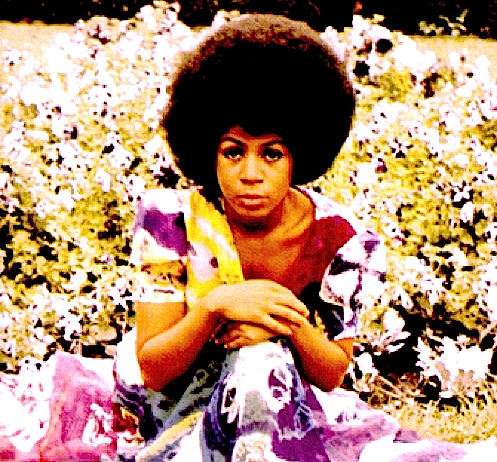
... she was 48 when she passed away.
... Mary Ann died May 14, 1970, and Marge passed away July 28, 1996.
-----
Did you know...Billy Joel, a then-unknown working as a session musician, played on the demo of "Remember (Walkin' In The Sand)." The demo was nearly seven minutes long, and for it to be played on the radio, the production team had it fade out around 2:16.
Because Betty did not tour until summer of 1965, and because she often did not appear in photos, many believed the Shangri-Las were a trio.
-----
Between 1964 and 1966 The Shangri-Las charted frequently with heartbreaking teen melodramas, and remain best known for "Leader of the Pack" and "Remember (Walkin' in the Sand)."
The Shangri-Las' were known for their "tough girls" look. Having grown up in a rough neighborhood of Queens, they had a harder, rougher edge than other female groups. Many other acts, who had never seen them, assumed they were Black.
There were many rumors about wild escapades. In one instance, there was a story that Mary Weiss was in trouble with the FBI for transporting a firearm across state lines. In her defense, she said someone tried to break into her hotel room one night, and for protection she bought a pistol. The group believed their reputation helped fend off advances from other musicians when they toured.
The group was formed at Andrew Jackson High School in Cambria Heights, Queens, New York, in 1963. It consisted of two sets of sisters: lead singer Mary Weiss and sister Betty and identical twins Marguerite "Marge" and Mary Ann Ganser The girls often appeared as a trio, since Betty rarely appeared on stage until late 1965, preferring to avoid touring.
They began playing school shows, talent shows, and teen hops, when they captured the attention of Artie Ripp, who arranged the group's first record deal with Kama Sutra. Their first recording in December 1963 was "Simon Says," later issued on the Smash label, on which Betty Weiss sang lead. They also recorded "Wishing Well" / "Hate To Say I Told You So," which became their first release in early 1964 when leased to the small Spokane label.
Initially, the girls performed without a name. But when they signed their first deal, they began calling themselves the Shangri-Las, after a Queens restaurant.
Mary Weiss was the main lead singer; Betty, however, took lead on "Maybe," and a number of B-sides and album tracks. One of The Ganser Twins took lead on "I'm Blue," which is a cover of the Ikettes biggest hit at the time, and was included on their 1965 album Shangri-Las 65!.One of the twins also takes the lead on "Sophisticated Boom Boom" b-side of "Long Live Our Love."
In April 1964, when the girls were still minors, their parents signed with Red Bird Records; the Ganser twins were 16, Mary was 15 and Betty was 17. They had their first success with the summer hit, "Remember (Walking in the Sand)" The recordings for Morton featured lavish production with heavy orchestration and sound effects, and their next and biggest hit.
The Shangri-Las continued to chart in the U.S., specializing in adolescent themes such as alienation, loneliness, abandonment and death. Singles included "Give Him a Great Big Kiss," "Out in the Streets," "Give Us Your Blessings," the top ten hit "I Can Never Go Home Anymore," "Long Live Our Love," "He Cried" and the spoken-word "Past, Present and Future," featuring music from Beethoven's "Moonlight Sonata."
Famous lines from "Give Him a Great Big Kiss" include "When I say I'm in love, you best believe I'm in love, L-U-V," and "Well I hear he's bad." "Hmm, he's good-bad, but he's not evil."
The group appeared on several TV shows, but in 1966 two of three releases on Red Bird failed to crack the U.S. top 50, although the group remained popular in England and Japan.
Mary Ann Ganser left but returned when Marge—the most outspoken member, sometimes considered the leader — left early in 1967. Then Red Bird Records folded. The group signed with Mercury Records. but the label showed a lack of enthusiasm for the group. During their Mercury stint, the Shangri-Las had no further hits. In 1968, they disbanded.
Court fights ensued with the group claiming they received meager royalties, despite the millions of records they sold.
(Continued below video and Amazon portals ...)
(Press album cover for direct link to the entire Amazon Website):
-----
Marge Ganser, worked for NYNEX in Valley Stream, New York, and died of breast cancer on July 28, 1996 at 48. Her twin, Mary Ann Ganser died on March 14, 1970, aged 22. The cause of her death has been variously reported as encephalitis, a seizure disorder, or barbiturates.
#####





 After breaking from "The Gems," Riperton made a complete switch; she joined the psychedelic rock group "The Rotary Connection" in 1967, becoming the lead singer in 1968. During her time with "The Rotary Connection," Riperton met songwriter and producer Dick Rudolph. They married in 1969 and had a son, Marc Rudolph.
After breaking from "The Gems," Riperton made a complete switch; she joined the psychedelic rock group "The Rotary Connection" in 1967, becoming the lead singer in 1968. During her time with "The Rotary Connection," Riperton met songwriter and producer Dick Rudolph. They married in 1969 and had a son, Marc Rudolph. 



























